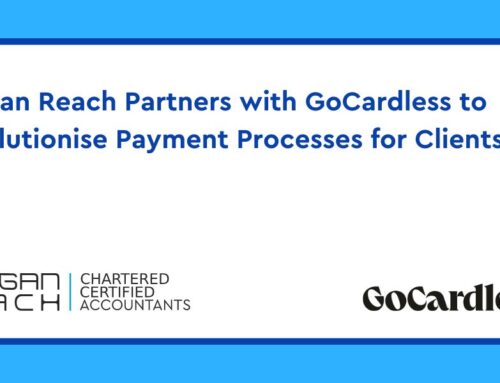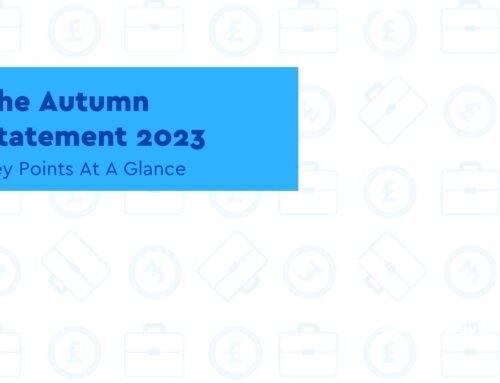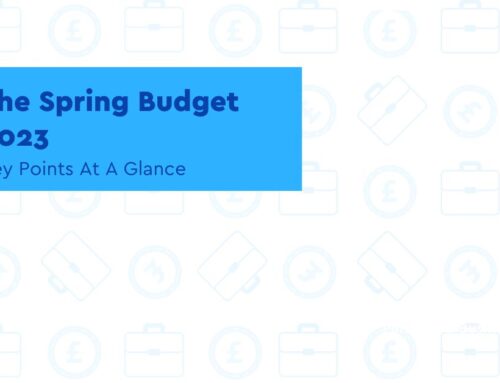News – Business Loan
Personal guarantees will be required for RLS follow-on scheme
Key Points
- The loans will be offered at market rates, instead of previous fixed low-interest rates
- The policy will cap the lending amount at £3bn for banks in a single year
Small business owners will be required to offer personal guarantees in order to access funding under the government’s follow-up to the Recovery Loan Scheme (RLS).
The loans will be offered at market rates, instead of previous fixed low-interest rates. According to several reports, the £3bn business recovery loan scheme will offer loans of up to £2m to small- and medium-sized enterprises, backed by a 70 per cent government guarantee.
However, unlike the RLS and its predecessors, borrowers will have to offer personal guarantees in order to access these loans. This means that they will be personally liable for any defaults which occur before the government guarantee is triggered.
Unlike previous loan schemes, the policy will cap the lending amount at £3bn for banks in a single year.
It is believed that the introduction of personal guarantees has been made in response to the well-documented fraud which took place during the pandemic.
During a government hearing last week, Lord Agnew called the government’s handling of the bounce back loan scheme “one of the most colossal cock-ups in recent government management”.
The Department for Business, Energy and Industrial Strategy believes £4.9bn could be unrecoverable through the £47.4bn bounce back loan scheme.
Craig Beaumont, chief of external affairs at the Federation of Small Businesses, said:
“If we head into a recession, having a new loan scheme in place in the lending market could prove vital, especially if banks pull up the drawbridge on commercial lending.
“At all costs we must avoid what we saw in 2008.”
Over the course of the pandemic, £79.3bn worth of business loans were made through Covid-19 financial support schemes.
The Financial Times has reported that the new government-backed loan scheme will be built on the existing RLS structure, and will run for at least two years.
It could be announced next week, but is unlikely to be up and running before the RLS comes to an end on June 30.
News – Payroll
2022/23 payroll challenges to be aware of
Key Points
- There have been recent changes to student loan plan 1 and 4 thresholds
- Employees have to pay more National Insurance on their salaries
- Employers pay extra National Insurance contributions for their staff
Payroll has been centre stage over the last two years with the interaction of CJRS claims and the necessity to continue to pay people during the pandemic.
There are also new requirements you are likely to encounter during the 2022/23 tax year, from national insurance to student loan repayment thresholds:
National insurance increases
The cash increase for both employees and employers is significant as you move up the earnings scale, with the standard rate of employer NI increasing by over 10% and the rate over the UEL by 62.5%. Employees have to pay more National Insurance on their salaries, employers pay extra National Insurance contributions for their staff, and the self-employed pay more National Insurance on their profits.
The dividend tax rate for basic-rate income taxpayers has increased from 7.5% to 8.75%, and for higher-rate taxpayers from 32.5% to 33.75%.
From July 6th 2022, the threshold will be increased to £12,570. The higher-rate threshold will remain at £50,270.
Off-payroll workers
The off-payroll working rules are designed to ensure individuals working like employees but through their own limited company (often known as a ‘personal service company’ or ‘PSC’), or other intermediary, pay broadly the same Income Tax and National Insurance contributions (NICs) as individuals who are directly employed. These rules are commonly known as ‘IR35’.
It’s nearly 12 months since the rollout of off-payroll working (IR35) for all non-small employers in the private sector. While standard payroll software can be used to pay them, more advanced tools should ensure that functionality that doesn’t apply to deemed employees can easily be suppressed through the setting of the “Off-payroll worker” marker. This will include exclusion from auto-enrolment, statutory payments and holiday pay.
Student loan thresholds
The student loan repayment threshold refers to the minimum salary you need to earn before you have to start paying back your student loan.
The Department for Education has frozen two of the student loan plan thresholds meaning that Plan 2 and postgraduate repayers will not see deductions drop if earnings stay the same whilst those on Plans 1 and 4 will see a reduction.
The Plan 2 student loan repayment threshold has been maintained at £27,295 for financial year 2022-23 at current levels and the Plan 3 student loan repayment threshold remains at £21,000 for financial year 2022-23.
Plan 1 graduates, such as English and Welsh students who started a course pre-2012, see their student loan repayment threshold increase from £19,895 to £20,195 a year from April. Employees on this plan will repay at 9% above the threshold.
Plan 4 graduates, such as Scottish students who studied post-1998, will see their student loan repayment threshold increase from £25,000 to £25,375 a year from April. Employees on this plan will repay at 9% above the threshold.
Auto-enrolment qualifying band frozen
The Department for Work and Pensions have uncoupled the link between the Lower Earnings Limit for national insurance and the auto-enrolment lower Qualifying
Earnings Band. This will remain at £120 per week, rather than rising to £123 per week, resulting in a small increase in employee and employer pension contributions.
News – Capital Allowances
Check if you can claim super-deduction or special rate first year allowances
Key Points
- You can only claim these allowances if you are a company.
- You also need to be subject to Corporation Tax and to have incurred the expenditure between April 2021 and April 2023
Following introduction of a new ‘super-deduction style’ investment allowance as part of the energy profits levy, HMRC has also published the following new guidance on the super-deduction itself and the special-rate first-year allowance.
Super-deduction and special rate first year capital allowances are temporary allowances you can claim on the cost of qualifying plant and machinery.
Special rate first year allowance is also known as SR allowance.
You can only claim these allowances if you are a company. Check what allowances you can claim as a sole trader or trust.
You can claim these allowances if all of the following apply:
- your company is subject to Corporation Tax
- you incurred the expenditure on or after 1 April 2021, but before 1 April 2023
- you did not buy the plant and machinery due to a contract you entered into before 3 March 2021
Check if your plant and machinery will qualify
Plant and machinery are tools of the trade, kept permanently for the use of the business. What counts as plant and machinery will depend on the nature of your business.
Find out more about what counts as plant and machinery.
To make a claim for super-deduction or special rate first year allowances, the plant and machinery must:
- be new and unused
- not be:
- given to you as a gift
- a car (other vehicles may qualify for the super-deduction) — find out about claiming capital allowances on cars
- bought to lease to someone else (unless it is background plant or machinery within a building)
- purchased in the accounting period the business activity ceases
If your plant and machinery is used in ring fence trades
You cannot claim super-deduction for plant and machinery used wholly or partly within a ring fence trade.
Find out more about capital allowances you can claim for a ring fence trade.
If you lease background plant and machinery
If you’re a property lessor, you may be able to claim for background plant or machinery in leased buildings. These assets are installed in various types of buildings to make them usable and include (but are not limited to):
- lighting
- wiring
- central heating
You cannot normally claim for plant and machinery within homes you let out.
If your plant and machinery are hire purchases
You can only claim for capital expenditure incurred on your hire purchase agreement.
You can normally make a claim if you:
- hire the plant and machinery for use in your business, without transfer of ownership, in return for regular payments
- are entitled to take ownership of the plant and machinery if the terms of the contract are followed
If the asset has not been brought into use for the business (but is still expected to be), you can normally claim allowances on the capital element of the instalments you have incurred.
When you bring the asset into use, you can normally claim allowances on the capital element of all future instalments straight away.
Check what may qualify for the super-deduction
You can only claim super-deduction for main rate plant and machinery.
Main rate plant and machinery is plant and machinery that is not special rate. Find out more about rates of capital allowances.
Plant and machinery that may qualify for the super-deduction includes (but is not limited to):
- machines such as computers, printers, lathes and planers
- office equipment such as desks and chairs
- vehicles such as vans, lorries and tractors (but not cars)
- warehousing equipment such as forklift trucks, pallet trucks and stackers
- tools such as ladders and drills
- construction equipment such as excavators, compactors, and bulldozers
- some fixtures such as kitchen and bathroom fittings and fire alarm systems
Integral features do not qualify for the super-deduction but may qualify for the special rate first year allowance.
Find an example of when a business can claim the super-deduction.
Check what may qualify for the special rate first year allowance
You can only claim special rate first year allowance for special rate plant and machinery. Find out more about rates of capital allowances.
Plant and machinery that may qualify for the special rate first year allowance includes (but is not limited to):
- integral features
- thermal insulation added to existing buildings
- solar panels
- assets with a useful life of at least 25 years — find out more about items with a long life
Find an example of when a business can claim the special rate first year allowance.
This article was sourced from gov.uk: https://www.gov.uk/guidance/check-if-you-can-claim-super-deduction-or-special-rate-first-year-allowances#full-publication-update-history
News – Salary sacrifice
UK savers could lose out on £1.9bn by not using salary sacrifice
Key Points
- More than half surveyed said they can’t save or invest as they want to because of rising prices.
- Salary sacrifice schemes are when employees get a lower salary in return for a benefit or perk
- It can also be used for pension contributions so an employee agrees to reduce their salary
Pension savers could be £200 on average better off per year by using a salary sacrifice scheme, according to recent research.
More than half (54%) said they can’t save or invest as they want to because of rising prices. Recent hikes to National Insurance, which increased 1.25p this month, have made matters worse, according to 38% of those polled.
But salary sacrifice can make pension savings more tax-efficient and could add a collective £1.9bn to the UK’s pension savings at a time of soaring inflation amid the cost-of-living crisis which is squeezing personal finances.
Salary sacrifice schemes are when employees get a lower salary in return for a benefit or perk such as travel or childcare. While it sounds like you’re giving up on part of your salary (and makes your salary look lower), it actually means an employee pays less income tax, and both the worker and employer pay less National Insurance.
Salary sacrifice can be arranged by someone’s employer. When an individual chooses this option, they agree to reduce their salary by an amount equal to their pension contributions. Their employer will then pay their total pension contributions.
It can also be used for pension contributions so an employee agrees to reduce their salary by the amount they want to contribute to their pension, and their employer will then pay their total pension contributions, saving both money in lower National Insurance contributions.
Take-home pay is actually higher due to the National Insurance saving, while the amount going into the pension remains the same.
Salary sacrifice saves someone earning £30,000 a year around £200 in NI. Someone on a salary of £50,000 would save around £330.
It means UK businesses may be losing out around £2.1bn. Yet around four in 10 workers with a DC pension, who could benefit from this, believe their employer does not even offer it at the moment or are unsure if they do.
Latest Snippets
Ensure you accurately reflect increased NIC thresholds in your July payroll
On March 23, 2022 the UK Government announced that from July 6, 2022 National Insurance thresholds would be increased. To accommodate this change, payroll software, including HMRC’s Basic PAYE Tools, will need to be updated. This may happen automatically, or you might need to take action.
It is important that payments due to be made on July 6, 2022 or later use the correct thresholds. Employers who run their payroll early should check that their software has been updated before processing and reporting these payments.
HMRC expect that all software will be updated by July 6, so any payments processed after that date should not need to be delayed. If you are unsure about whether or not your software has been updated, please contact your software provider.
If you use Basic PAYE Tools, please note that this software will be updated to take account of National Insurance threshold increases from July, so please wait until after July 4 to run payroll for any payments made on or after July 6, 2022.
Government to review accounting rules for smallest companies
The government plans to review wider reporting burdens on large and small businesses – including those from retained EU law.
It will also review the reporting requirements on smaller public interest entities to help attract high-growth firms, and will consider whether there are unnecessary restrictions on remunerating directors in shares.
No extra regulations will be added to smaller businesses through the reforms: the focus is on the UK’s largest companies because so many jobs, suppliers and pensions depend on them. Unlisted companies with over 750 employees and with over £750 million annual turnover will come under scope of the regulator, a threshold set following consultation to ensure the reforms are as targeted as possible and minimise unnecessary burdens.
Large businesses will have to be more transparent about their profits and losses – not dishing out dividends while on the brink of collapse – while also providing more information to investors and the public about what they have done to prevent fraud, which company metrics have been independently checked and about the risks their company faces.
Get In Touch
At Morgan Reach, we understand every business needs a little help now and again-especially when it comes to the financial side of things. Therefore, to help our clients and visitors we endeavour to cover as much of the business news as possible. If you are self-employed or run a business and need assistance and advice on how these news could make a difference to you or your business, feel free to get in touch with the experts at Morgan Reach. Our business growth experts at Morgan Reach will guide you through what support is available for you or your business as well as the latest news that may affect you.







